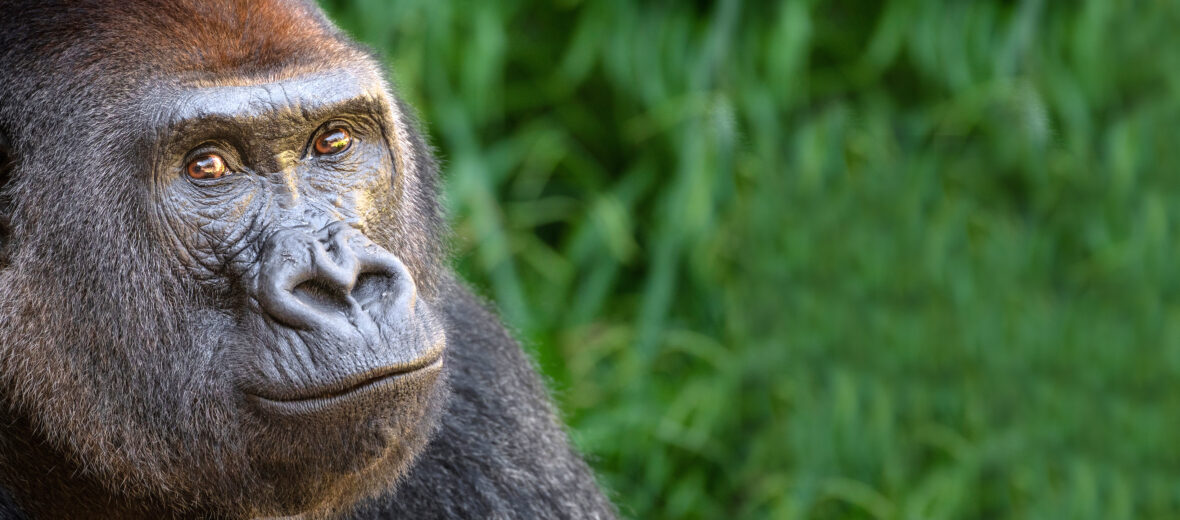
The western gorilla can only be found in forests, tropical jungles, lowland swamps, and secondary forests in western Central Africa. More specifically they dwell in Angola, Cameroon, Central Africa Republic, Congo, Gabon, Equatorial, and Guinea. These amazing primates face the threats of habitat destruction at the hands of residential and commercial development, agricultural expansion, road & railway construction, and logging; hunting; trapping; and habitat altering climate change. The IUCN lists these great apes as Critically Endangered. Their populations are also decreasing.
First the Stats…
Scientific name: Gorilla gorilla
Weight: Up to 374 lbs.
Length: Up to 66.9 inches
Lifespan: Up to 50 years
Now on to the Facts!
1.) Adult males are often referred to as silverbacks, due to the grey hair on their back and rump.
2.) Gathering into troops of up to 15 individuals, these gorillas are highly social creatures.
3.) The troop contains a dominant male and subordinate females and their offspring.
4.) Like other gorilla species, the western gorilla is diurnal (active during the day).
5.) Mobility is achieved by walking on all 4 limbs. However, they can stand erect on their hind legs for short distances.
But wait, there’s more on the western gorilla!
6.) They build soft nests daily on the ground and in the trees. These nests are used for sleeping and resting.
7.) While normally tolerant, friendly, and a little shy, these apes can become very dangerous if threatened or cornered.
Did you know…?
These apes can run at speeds of up to 24.85 mph, for short distances!
8.) When threatened, the dominant male will often stand erect, beat his chest, swing broken branches, growl, and even charge. However, this is often times all a bluff as physical encounters are rare. But they do happen with lethal results.
9.) A group of gorillas is called a whoop, band, or troop.
10.) Their herbivorous diet consists of berries, ferns, bark, leaves and soft stemmed plants.
But wait, there’s still more on the western gorilla!
11.) Western gorillas are polygynous (1 dominant male mates with several adult females).
12.) These great apes breed year round.
Did you know…?
Gorillas have the ability to exhibit a wide range of emotions, like grief, joy, elation, and anger.
13.) Females undergo up to a 289 day gestation (pregnancy) that yields a single infant. Sometimes twins are born.
14.) The mother keeps her infant with her, belly to belly, for up to 2 months.
15.) Weaning happens in up to 3 years.
But wait, there’s still a little more on the western gorilla!
16.) Due to their diet, these apes are important seed dispersers that aid in the jungle’s continued growth.
17.) These creatures were documented using tools. In 2005 they were found to use sticks to determine water depth before crossing waterways.
18.) They don’t usually drink standing water, preferring to get their needed water requirements from the vegetation they consume as well as from the dew on leaves.
Now a Short Western Gorilla Video!
This video talks about gorillas in general.
Be sure to share & comment below! Also, check out the Critter Science YouTube channel. Videos added regularly!
Want to suggest a critter for me to write about? Let me know here.
Some source material acquired from: Wikipedia & IUCN
Photo credit: L.A. Zoo. (Photo is of a western lowland gorilla.)



